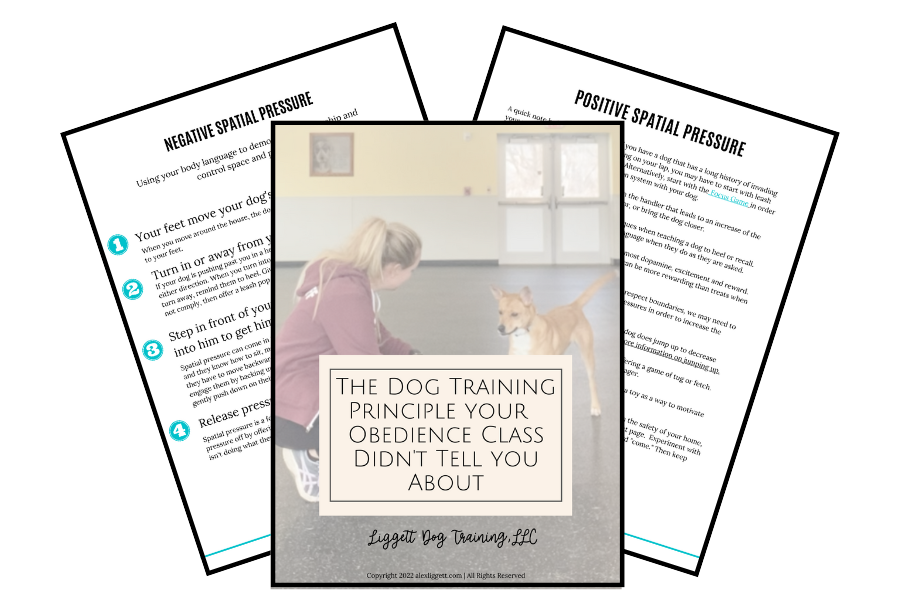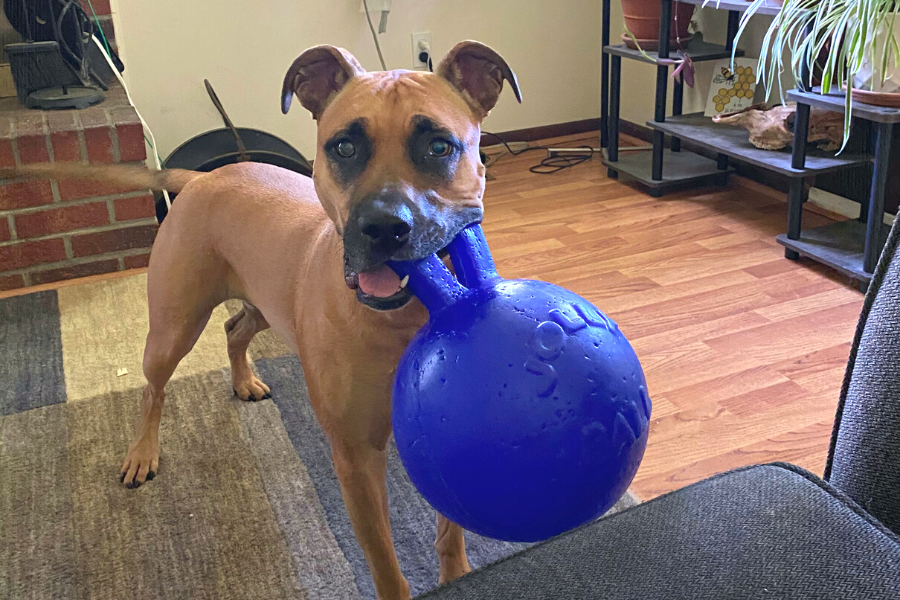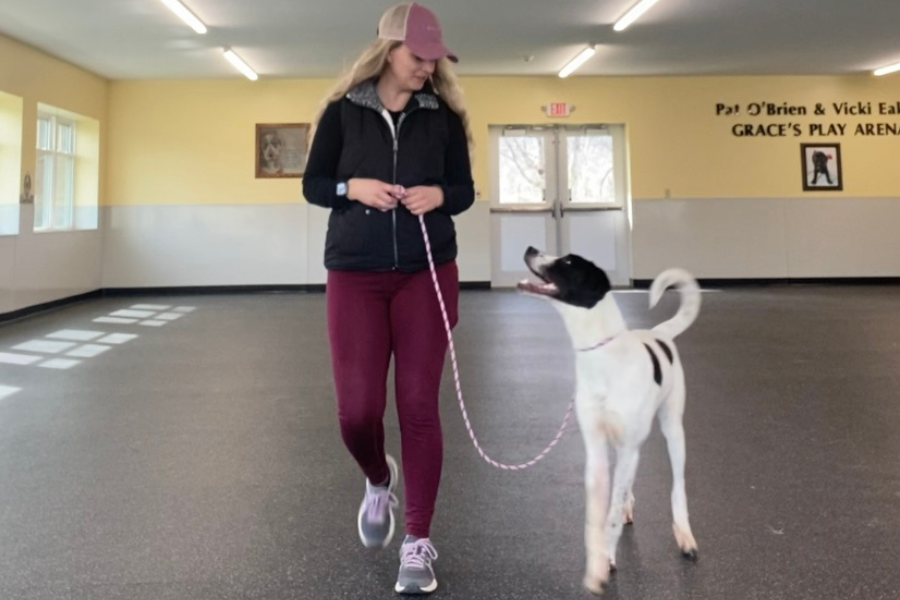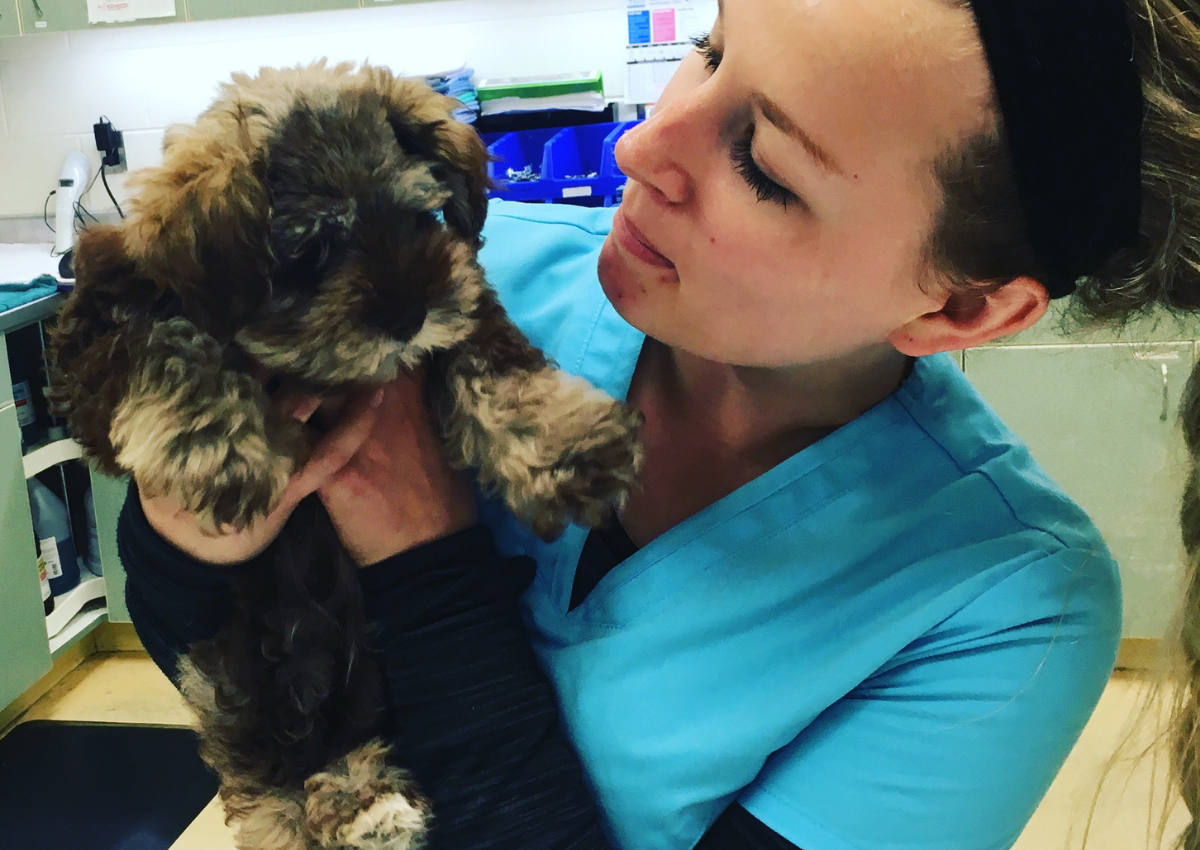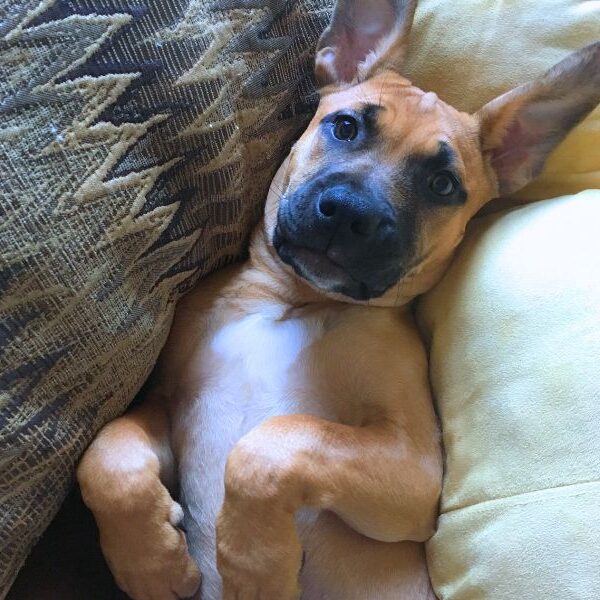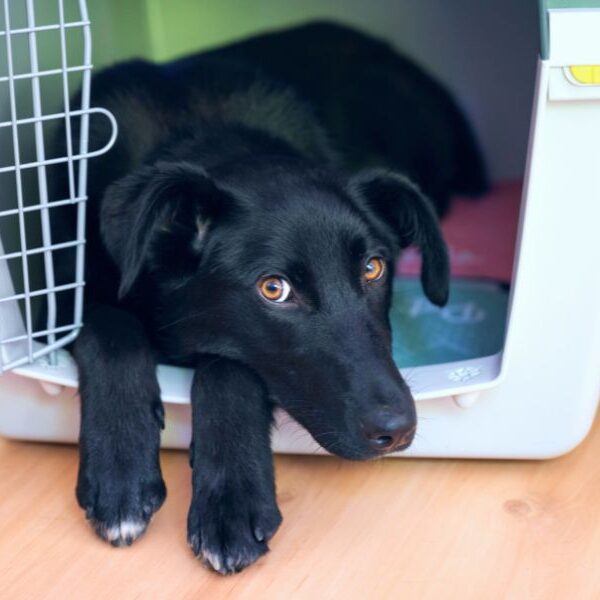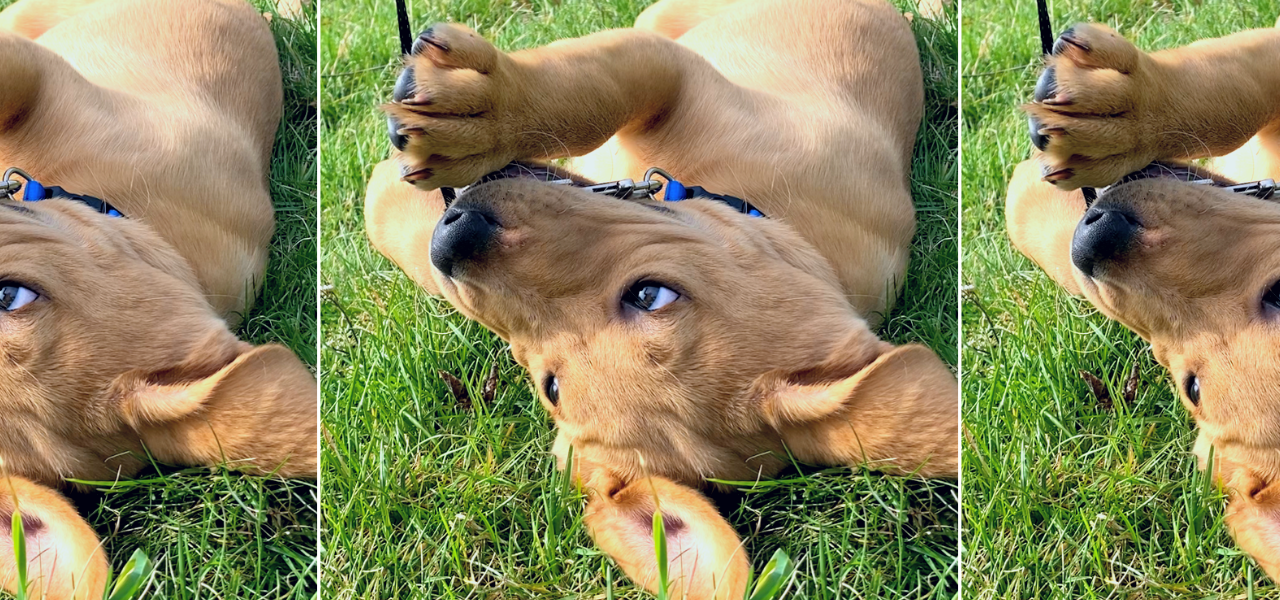
This post will teach you all about how to stop leash biting.
When you have a dog that grabs the leash in their mouth playfully or to have something to chew on, it can ruin the walk for both of you. Not only can it damage a nice leash, but it can also make you feel like you don't want to take your dog out on a walk. After helping many puppy and dog owners teach their dog how to stop biting, I have found a way to stop the behavior without treats, redirection, training collars or bitter apple spray.
Whether you have a puppy who has just started to leash bite, or an older dog who has been biting the leash for years, this post will teach you how to stop leash biting.

How to Stop Leash Biting
Leash Biting Puppy
A dog or puppy who bites the leash can ruin the walk, especially if they are trying to play tug of war! Redirecting with toys and offering treats in exchange will only go so far. Eventually, the puppy learns if they grab the leash then you'll offer them a treat in exchange.
Chewing on the leash is a way to show their excitement and willingness to explore! However, this is not an appropriate way for puppies to express themselves.
Puppies chew on leashes because, well... why not? They are a fun texture, and when they pull on it, you might decide to pull back initiating a game of tug of war or wrestling. And Tug-of-War is FUN and engaging for puppies.
A puppy who bites the leash is NOT biting the leash to spite you. They might be trying to get a reaction from you so that you play, but it is not because they are holding a grudge. Dogs don't understand that you spent your time working to earn money and then spent your time picking out the perfect leash. They don't understand that if they break it or damage it that you will have to go out and purchase another one.
All the puppy sees is something interesting they can put their teeth on and explore.
Dog Biting Leash and Jumping
If your dog is biting the leash and jumping, they are looking for fun and engagement from the person on the other end of the leash. However, the jumping up is indicating that the dog is also not showing respect to your personal boundaries either .
One quick fix for biting on the leash include using a bitter apple spray. This works for some dogs, every now and then some dogs think it makes the leash taste better though!
Be VERY careful to not spray the leash while it's on your dog. Spray in an outdoor area away from your dog so that the spray doesn't get in their nose.
Be sure to aim carefully as this tastes horrible and you don't want to get any of the spray particles on your lips or hands because the taste will last an afternoon.
You may need to reapply since it's not meant to last too long.
Golden Retriever Biting Leash
Any breed can end up loving to chew on their leash. Many doodles, goldens and labs love to try to chew on their leash!
Leash Biting Aggression
There are dogs who may bite the leash because they are redirecting their frustration. In this case, be grateful that your dog isn't redirecting at your arm or leg!
If your dog bites the leash when he sees another person, animal or other trigger, it's best to seek help from a professional trainer who can give you the tools and education to keep you and your dog safe as you work through this behavior issue.
How to Stop Dog From Biting Leash When Walking
One of the easiest ways to stop leash biting is to use your space to correct your dog. When your dog starts to bite the leash, turn and face your dog and walk into them confidently (without stepping on them!) until they back up and drop the leash.
If they are sitting or laying down, you'll have to scoot your feet under your dog until they get up. You may also have to bring the leash straight up over the dog's head and give some light pressure or quick tugs so they don't turn away from you.
The second your dog takes his mouth off of the leash, take a step back to relieve the spatial pressure.
If your puppy or dog lays flat out on their side while you're correcting them with your space, don't continue to walk into them. Walk away from them and use your energy to engage and entice your dog into getting up. You can use smooching noises, their name and "let's go" (not your heel or come command).
You may have to repeat this process several times before your dog starts to understand that they are being corrected for putting their mouth on the leash. It's a little bit of a dance, but someone is always more persistent, and it will be you or the dog.
Why does my dog bite the leash?
If your having trouble using space to correct your dog, it's probably because your dog doesn't respect your space.
The #1 comment I hear from dog training clients is that using their space has made the biggest impact on their dog's behavior. And this is NOT something your puppy classes will teach you about.
Dogs primarily communicate with their space. A dog who is pushy, nudges you for attention, jumps up, is constantly touching you or mouthing you is controlling your space. If they control your space and don't have respect for your space, they may struggle to respect you as you move through this exercise.
Not only can you use space to correct your dog when they bite the leash, but you can also use it to correct them from counter surfing, jumping up, being destructive or pulling on the leash.
We may be saying one thing with our voice, but our body language could be conveying another message to the dog. If your voice and nonverbal communication is not in sync, this could be exactly why you and your dog are struggling with basic obedience or behavior modification.
That's why I created the Dog Training Principle Your Obedience Class Didn't Tell You About. This ebook goes over exactly how to do the exercise I teach my dog training clients. I teach you to take control of your space and to help your dog start listening. Click the link below to get started moving through your home and teaching your dog in a language they understand.


